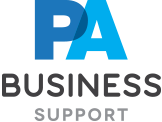At PA Business Support we’re committed to diversity and tackling the issue of diversity in the workplace. It’s tough – the UK still has a long way to go to reach a level playing field, and some of our practices that challenge this (like blind screening – see tip 5, below) are too progressive and too disruptive for some businesses. And if that’s the case then we always encourage conversation and aim to help them navigate their journey. We are conscious that our best clients are not just ticking boxes – they are future-facing, willing to take our advice, and determined to be the change they want to see in the world. And we’re right there with them.
Many execs have no problem embracing policies, initiatives, and tools designed to increase levels of diversity among employees. However, the mistake that is often made is to focus solely on the recruitment process. True diversity requires inclusivity: in other words, creating, nurturing and maintaining a company culture where people from all backgrounds feel included.
Consider the employee who’s a native French speaker but doesn’t feel comfortable speaking any language other than English in workplace common areas. Or the breastfeeding mother just returning to work who has no space to pump her breast milk. Or the Muslim employee who feels insecure about maintaining his daily prayer routine on company grounds.
All too often we see senior leaders implement incomplete or ineffective strategies by not properly understanding their diverse employees’ needs. When your employees feel they have to mask or hide core parts of who they are at work because they feel unsure, unsafe, or invisible, it points to a workplace that isn’t inclusive.
On many subtle levels, diversity and inclusivity must be made a part of a company’s DNA before it succeeds. This, of course, is much easier said than done. So, here are our own tips for getting it right…
1. Remember that diversity is more than just race
Too often the diversity issue gravitates towards whatever’s trending in the media. True diversity is about different types of people, with different backgrounds, nationalities, physical abilities, etc. and not just race and gender. It’s important to bear this in mind from the start.
2. Make the hiring process transparent
This is a practice that has been encouraged for years. But let’s just spell it out: it should be crystal clear that people are going to be hired on their own merit and that everyone is on a level playing field. Aim to remove any ambiguity.
3. Use hard metrics and clear criteria to “demystify” evaluations and promotions
Removing bias from decisions relating to evaluations and promotions is no mean feat. However, step one should be to establish clear criteria and hard metrics. Rigorously tracking both of these can highlight where bias exists, and help you remove it.
4. Implement training to mitigate biases and increase cultural “competency”
Here’s what we don’t mean by this: bring in an external supplier for a half-day workshop. The best programs are ongoing, and contain multiple approaches. A workshop might be one. Regular, informal discussions about bias and cultural issues in small focus groups could be another.
5. Blind screen candidates when recruiting
At PA Business Support we usually redact names, age and any other non-relevant background information from CVs when we recommend candidates to our clients, in order to prevent any unconscious bias creeping in. Working with a recruitment agency that does this is a really good first step towards eliminating bias at the hiring stage.
6. Demonstrate genuine commitment to your antidiscrimination policy
And by this we’re not talking about a statement the legal department draft and leave unread on the company intranet. Your policy needs to be explicitly and frequently communicated, sending the signal that the company takes it seriously. Then it needs an actual commitment to follow it, especially by senior employees, who need to be seen to take decisive action when problems arise.
7. Consider flexible work programs
According to a recent survey, titled Fixing the Flawed Approach to Diversity” which asked actual diverse groups themselves what they believe are the most effective measures, part-time positions, flexible working hours and remote working frequently ranked much higher than where most company leaders – primarily white, heterosexual males – placed them.
8. Approach diversity with a methodical and business-minded approach
Just like any other business initiative, a properly laid out plan to implement diversity needs goals and KPIs, regular feedback and assessment, and constant support and promotion from senior leaders. In short, don’t wing it.
In the end, diversity is more than just an ethical question. The benefits of have been shown to include higher revenue, more innovation, better decision making, higher rates of job acceptance (when you make offers to qualified candidates), and better performance than competitors. In short, diversity is an investment – for the future of your business, and for a better world.
If you’d like help taking the first steps in tackling bias in the recruitment process, with an excellent choice of candidates and experience regardless of race, gender, age, religion, nationality or sexual orientation, then give us a call!




